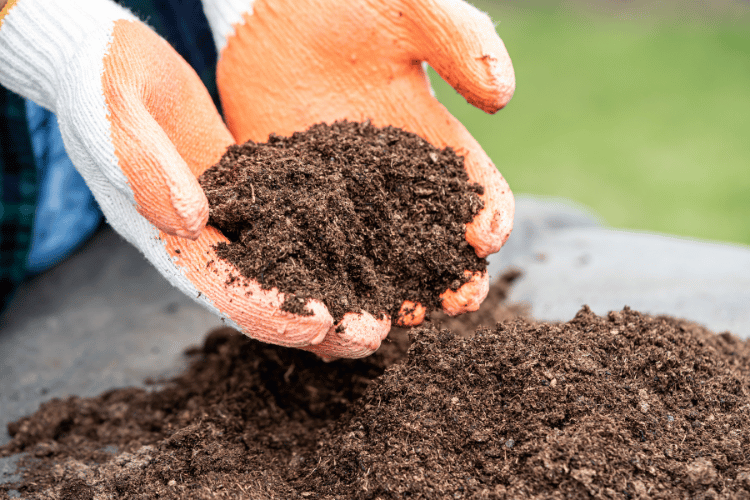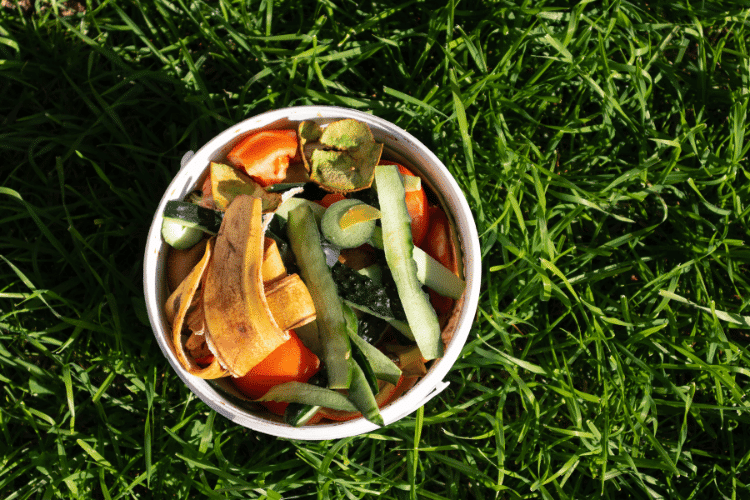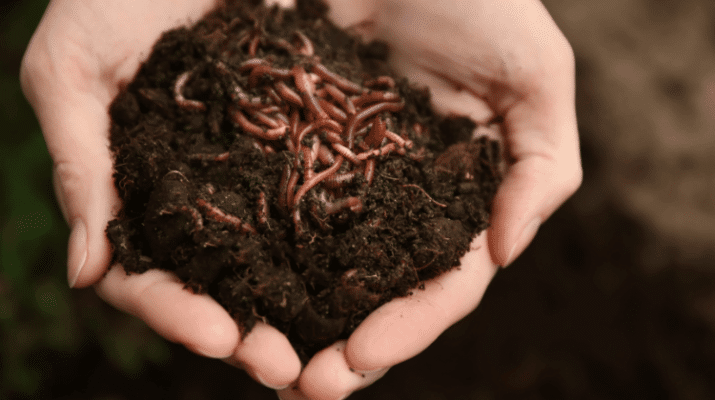Cultivating a healthy worm farm needs nourishing bedding and soil. When it comes to the latter, the best soil for worm farming comprises multiple factors.
As a layer of bedding, it should be slightly damp, evenly dispersed, and nutrient-dense. Soil alone won’t take your worm farming potential to the next level.
You’ll need to add elements like perlite, coconut coir, and animal manure to keep your worms happy. Stick around to learn more about soil for worm farming.
Characteristics of the Best Soil for Worm Farming
Earthworms squiggling around your farm love eating soil filled with nutritious organic matter. Subsequently, your soil should contain residues of plant debris, such as leaves, roots, manure, and grass.
The dirt should be damp to support the worms’ breathing pattern. The wigglers breathe through their skin rather than have lungs. The slimy mucus exterior allows them to absorb surrounding oxygen. Speaking of which, the soil needs to be fluffed and aerated.
If it’s too moist, dry, or compact, the worms will likely drown, suffocate, or try to escape, respectively. Another crucial aspect worth considering is your soil’s temperature. If it’s too low or high, your wrigglers will breed less often, compromising your budding population.
You can tell if the temperature is too warm since you’ll notice the worms crawling to lower, colder layers and dispersing themselves. Meanwhile, if they’re squirming in a ball, they’re likely trying to retain heat.
Overall, you’ll want to consider these characteristics:
- Moisture Levels: Disperse dampness across the worm farm using a spray or mist. A worm blanket can also help keep the environment moist.
- Temperature: The temperature of your soil should range between 59 to 77 degrees F.
- Components: Healthy additions to the soil will reap higher-value worm castings and worm tea.
- Amount: Disperse around two to four cups of soil when filling your worm bin.
Soil and Worm Farming
When developing worm farms, your prime concern should be the bedding. While soil is critical for sheltering the worms, it alone won’t allow them to thrive.
Your soil needs organic matter and nutrients so the worms can feed, mate, and breed successfully. Overall, soil can keep the worms alive, but it won’t give you the ideal vermicompost environment.
Essential Soil Additions for Worm Farming
Whether you’re trying to extract a healthy load of worm tea or worm castings, your soil must contain nutrient elements. These include peat moss, coconut coir, humus, compost, and manure.
Peat Moss

Peat moss is an exceptional addition to your soil. It improves the dirt’s texture and absorbs excess moisture. The component also breaks apart compact bits, aerating your soil.
Some peat moss can have excessive chemicals. Subsequently, we suggest looking for organic and all-natural products.
Besides that, peat moss tends to have a slightly acidic pH. You can reduce its acidity by spritzing it with water and leaving it for about a day. Then, add it to your vermicompost environment.
Coconut Coir
Coir is a natural fiber extracted from a coconut’s outer husk layer. The prime benefit it offers is that it oxygenates the worm bin. It allows airflow to pass around the worms’ bedding.
Like peat moss, coir absorbs excess moisture and restricts strong odors, keeping your bin low maintenance. Before incorporating it into your vermicompost, dampen it and wring out the extra water as it expands like a sponge.
Ensure that the coir is non-toxic before purchasing it since the worms will likely consume it with their bedding.
Perlite
Perlite is ideal if you’re looking for a lightweight soil addition. They’re perfect for absorbing extra water and reducing stenches. Nonetheless, the material tends to break down easily.
You can combine perlite with peat moss by adding three to four parts of the latter and one part of the light material.
Compost
Food waste, including fruit and vegetable scraps, coffee grounds, egg shells, and tea, offer ideal vermicomposting soil additions.
You’ll want to avoid using organic materials that inhibit your vermicomposting environment. Foods that contain dairy, meat, yeast, and citrus can attract pests and unwanted bacteria. They can also cause a pH imbalance.
Coffee Grounds
Coffee grounds act as a natural pesticide, deterring ants, snails, and slugs. Additionally, worms have no teeth. In turn, the fine particles are easier to swallow. The gritty texture also allows worms to process their food better.
Egg Shells
Egg shells provide your vermiculture with calcium and lower acidity levels. The pieces also ease the worms’ digestion process. The addition may also improve your wrigglers’ chances of reproduction.
Vegetable and Fruit Peels

You can add a myriad of produce peels to feed your worms. They can include banana peels, apple cores, broccoli stalks, lettuce, carrot peels, and potato skins.
Besides that, you’ll need to be cautious when using some types of vegetable and fruit waste. Options like pumpkin, cantaloupes, and squash contain excessive water. That moisture can gather at the bottom of your bin and push your worms to surface level.
Subsequently, you’ll want to add extra moisture-absorbing bedding to soak up all the incoming mess.
Tea Bags
Used tea bags can break down in your worm bin. We suggest cutting off the paper portion and ensuring the staples are removed. In addition, the tea bags should be made of plant-based biodegradable material rather than microfibers.
Tossing unused tea bags can add too much acidity to your bin. Besides that, the used tea bags offer a healthy dose of nitrogen to the worms’ diet. You can cut up the tea bag to speed up the vermicomposting process.
Manure
Mixing manure with your soil makes for nutrient-dense vermicomposting feed. According to research, cattle manure yielded the best results in its worm-casting productions. Nevertheless, you can use several other kinds of manure, such as:
- Sheep
- Goat
- Horse
- Pig
- Hog
- Chicken
- Rabbit
Before you add the manure to your worm bins, you need to pre-compost it. The process will remove any remaining weed seeds. These seeds’ exterior layers will break down as the manure ages, and it’ll offer little benefit afterward.
Additionally, pre-composting will balance the manure’s nitrogen levels and lower the amount of inorganic salt.

Shredded Components
Carbon is a crucial component in your worm bin. It helps neutralize the excess heat coming off the nitrogen-rich elements in the worms’ food and other bedding particles. In turn, it creates ideal temperatures for your compost worms’ survival.
That said, you can add carbon-dense items like shredded newspaper, cardboard, egg cartons, and paper. Not only will it make it easier for the wigglers to squirm around the bin, but you’ll also be reducing your paper waste footprint.
Fortunately, composting worms can eat shredded paper. The newspaper ink won’t be harmful to them. Other items like paper towels can be more beneficial since they’re water absorbent.
Worm Farm Conditioner
Worm farm conditioners combine pH-neutralizing and nutritional minerals. They can also assist the worms’ digestion and reduce strong odors.
The good news is that you can DIY a batch or find commercial options in the worm farming market. If you want to create your own, add three parts garden lime to one part zeolite. Store-bought choices add other ingredients like crushed rocks.
FAQs
What is the best organic soil for worms?
The best organic soil components you can add to your worm bins include perlite, peat moss, and coconut coir.
These materials provide aeration and sufficient water absorption. They can keep your bedding stench-free and allow more room for the wigglers to move around freely.
What type of soil do red wigglers prefer?
Red wigglers prefer soils riddled with dead plant matter, vegetable scraps, and manure. They don’t thrive well in pure soil environments. They enjoy feeding on nourishing compost bedding.
Speaking of which, they prefer damp shredded newspaper for easier movement and faster reproduction.
Do worms like warm or cold soil?
Worms prefer warm and dark environments. For this reason, keeping them in a shaded location like your garage, basement, or back porch is best.
Too much heat can dry out their skin and suffocate them. During colder months, they go through a period, similar to hibernation, called estivation. They remain coiled in a ball-like shape, covered in a protective mucus layer.
What soil has a lot of earthworms?
Loamy and moist soils attract the most earthworms. The dirt is more refined and allows the worms to wiggle more freely. Meanwhile, the moisture keeps the worms’ wet coating intact.
Meanwhile, overly dry, sandy, and clay-like textured soil doesn’t provide worms with an adequate environment.
Final Thoughts
Finding the right soil type with suitable additives for your worm bin can boost the wigglers’ reproduction, feeding cycle, and overall activity.
Your soil should be damp, warm, and evenly spread out. Plus, you need to integrate components to nourish your worms and reap higher-quality worm castings and tea.
These can include perlite, peat moss, coconut coir, and kitchen scraps. The additions will help neutralize your worm bin’s pH levels, offer aeration, add moisture absorption properties, and improve your wiggler’s health and lifespan.

